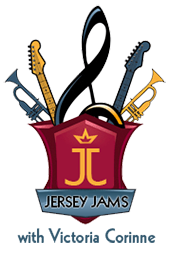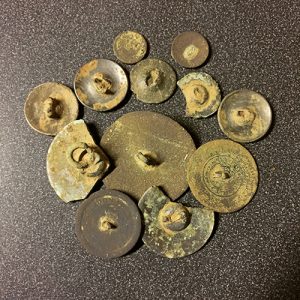 One year ago, I wrote an article entitled, “NJ Copper Coins.” In it, I told a brief history of our state’s own colonial coinage and my desire to find one of these Garden State gems (of course, pre-dating the term “Garden State.”) One year later, I’m happy to say I found it!
One year ago, I wrote an article entitled, “NJ Copper Coins.” In it, I told a brief history of our state’s own colonial coinage and my desire to find one of these Garden State gems (of course, pre-dating the term “Garden State.”) One year later, I’m happy to say I found it!
Before I dig in, I’d like to do another sequel of sorts, adding on to “Old Buttons Found in New Jersey.” Recently, I had a great outing on a property in Central New Jersey. Over the span of just three hours, I found numerous buttons, dating from the late 1700s through the mid-1800s. In the photo below, some of the older ones are known as tombac buttons. Worn in the late 1700s and early 1800s, these copper alloy buttons often are found in the condition like mine – beat up and missing the shank/loop. And when found in farm fields, they are often victim to farm machinery and harmful pesticides. Most of the other buttons are mid-1800s and were typical fashion. Plain fronts, with various backmarks indicating the button’s maker and sometimes country of origin. Being one of the original colonies, most old buttons in New Jersey were made in England.
Imagine how heavy your clothes would be if you had 10 of these on your shirt or coat!
In the same three hours that I found the buttons, I found what I like to find most – old coins. If In my previous article, “NJ Copper Coins,” I explained that US currency prior to the American Revolution didn’t exist – because there was no US! So we used foreign currency, primarily British and Spanish, although other coinage did circulate as well. On this day I found a nice variety of colonial-era coins, from various countries:
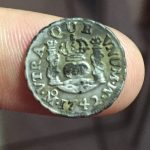
1742 Spanish Half Reale (Mexico Mint)
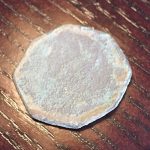
Mid-1700s King George II half penny, shaped by someone into an octagon
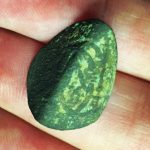
Mid-1700s German states Cologne ¼ Stüber
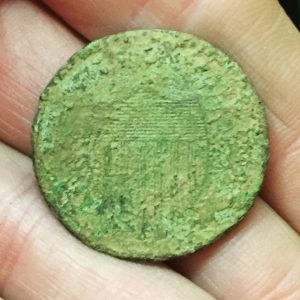
1786 NEW JERSEY COPPER – MOST LIKELY A MARIS 14-J VARIETY (the other side is too worn to get a 100% positive ID)
In addition to the “foreign” coins, I found something native to the colonies. And not just native to the colonies, but native to our great state of New Jersey! About 8-inches beneath the surface, nestled there for over 200 years, I retrieved what was obviously a coin. Caked in dirt and damaged from the elements, I wasn’t sure if I’d ever know its true identity. I carefully brushed away some dirt to see if I could reveal any detail. It’s wise not to add water to copper coins as they can oxidize quickly and turn green. So I just used my fingers, thinking I wouldn’t have much luck. Then, slowly, the tell-tale shield of the NJ Copper coin revealed itself! I literally felt chills and a surge of excitement when I realized that I had done it – I found the coin I had been seeking for years!
While worth very little due to its condition and relative commonality of my particular coin (there were over 150 different varieties of the NJ Copper coin!), it now ranks among my most valued treasures. True New Jersey history!



















